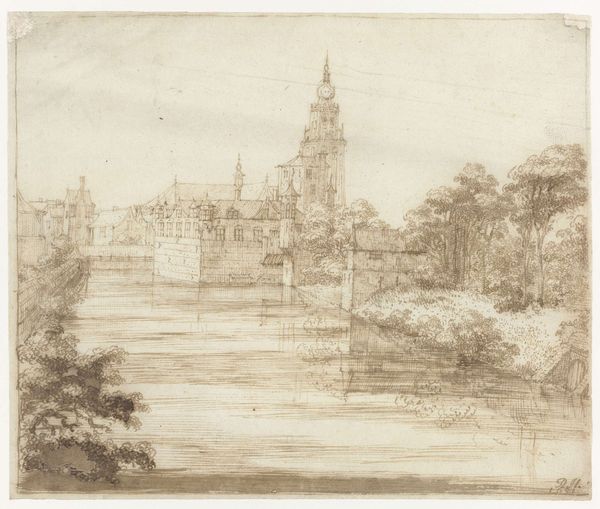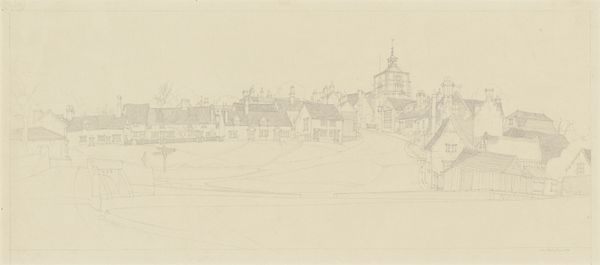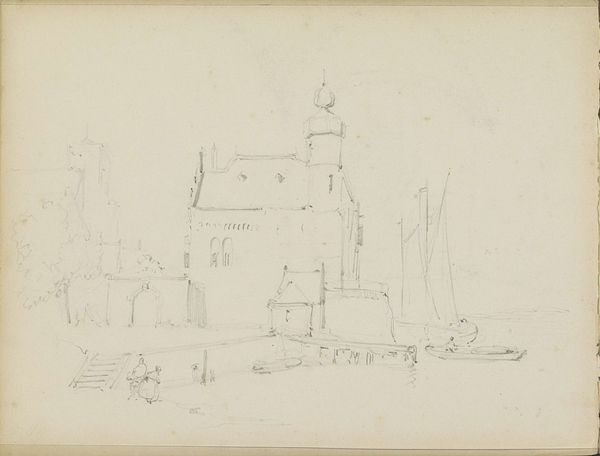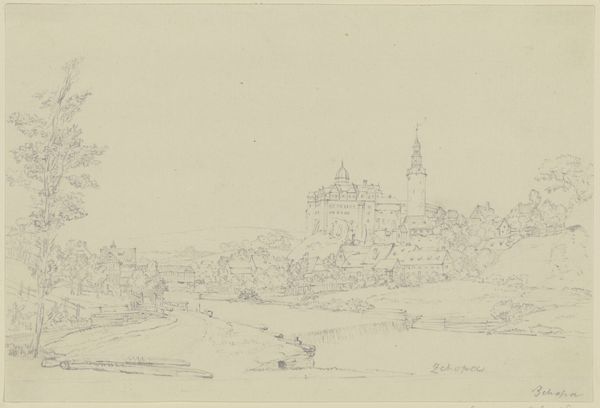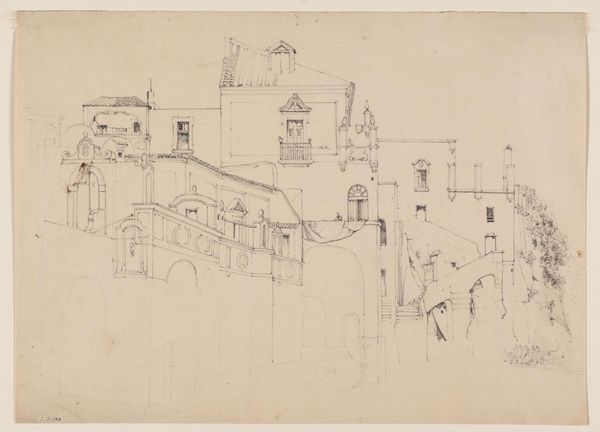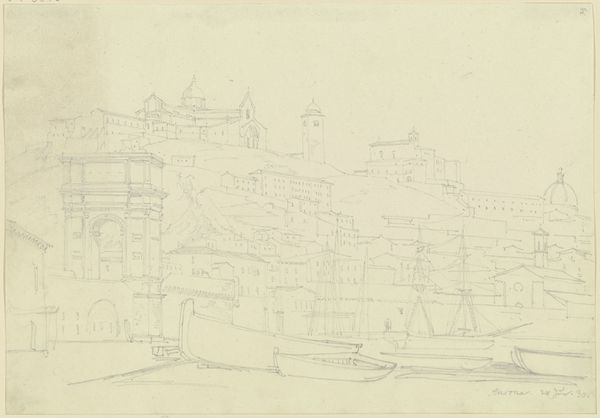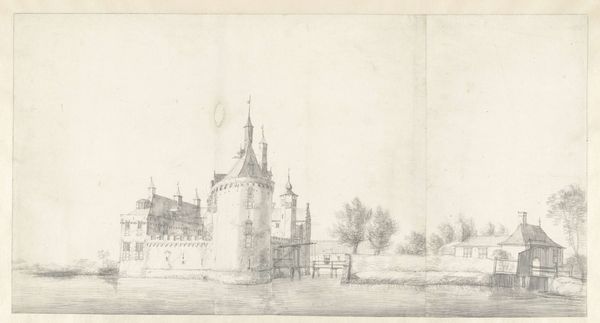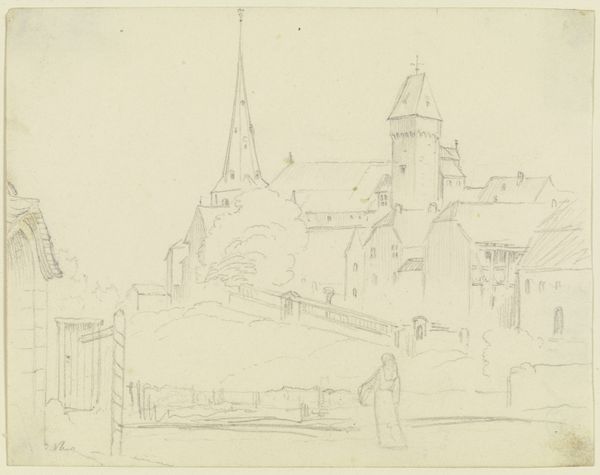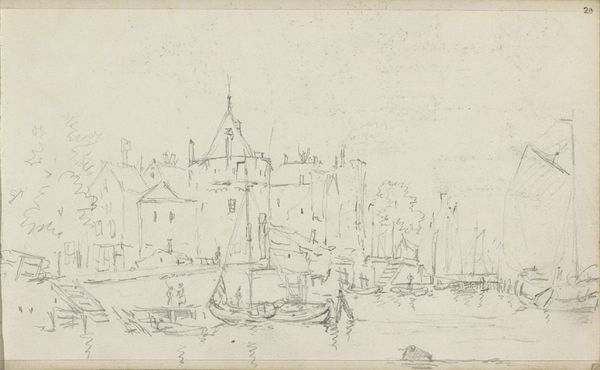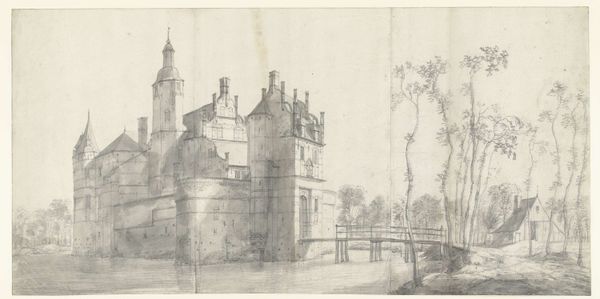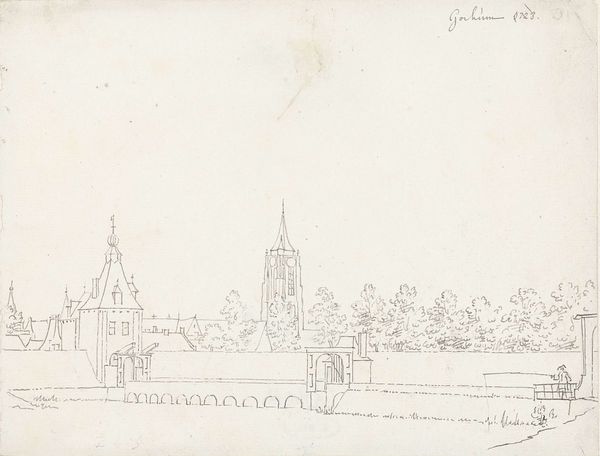
drawing, pencil, architecture
#
drawing
#
landscape
#
etching
#
pencil
#
architectural drawing
#
architecture drawing
#
cityscape
#
architecture
#
realism
Dimensions: overall: 31.5 x 47.9 cm (12 3/8 x 18 7/8 in.)
Copyright: National Gallery of Art: CC0 1.0
Curator: Here we have Robert Austin's "Wurzburg," an etching rendered circa 1924. It showcases an intricate architectural landscape. What strikes you first about it? Editor: Its muted tone lends the whole scene an air of delicate timelessness. The weight of the stone architecture against the almost ephemeral water...it suggests a kind of enduring melancholy, don't you think? Curator: Interesting take. Considering Austin’s precise realism and the historical context of inter-war Europe, it’s easy to interpret a feeling of nostalgia or even a subtle sense of loss. After the turbulence of the First World War, many artists grappled with representing the remnants of the old world order amidst modernization. Editor: And visually, notice how the solid permanence of the buildings is subtly challenged by the bridge's arches mirroring in the water, creating this powerful, symbolic contrast. Bridges often represent connection, transition, but here, they almost seem to be dissolving back into the subconscious. The light, however sparse, feels charged with symbolism. Curator: Absolutely, the bridge becomes a focal point – not just architecturally, but historically as well. Wurzburg, being a strategic point, witnessed significant events. Austin captures the bridge’s sturdiness, indicative of resilience in the face of change and conflict. One can almost see it as a monument reflecting both civic pride and past tribulations. Editor: It makes you wonder if he chose this perspective intentionally, with the bridge dominating. Also, the repetition of arches creates a visual echo... a sense of something repeating through time. Given the period, one has to ask: What echoes are present? Of history? Of loss? Of some unidentifiable collective angst? Curator: Those are powerful observations. Austin was part of a generation grappling with collective anxieties. Looking closer at how his precise pencil lines meticulously capture the physical structure allows the scene to remain objective, which lends another angle in considering public role of imagery in post-war sentiments. Editor: True. All these layers— the weight of the architecture, that pale light, and those arches leading who-knows-where— definitely elevate this cityscape beyond simple topography. It resonates far deeper into a collective cultural consciousness. Curator: Indeed. Considering the socio-political climate, Austin's "Wurzburg" speaks volumes through subtle lines and carefully chosen perspectives, presenting more than just a scene but an evocative experience about time and resilience. Editor: Yes, sometimes the quietest images leave the most lasting imprints.
Comments
No comments
Be the first to comment and join the conversation on the ultimate creative platform.
